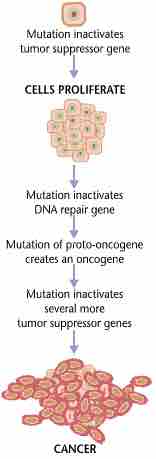Worldwide, cancer viruses are estimated to cause 15-20% of all cancers in humans. Most viral infections, however, do not lead to tumor formation; several factors influence the progression from viral infection to cancer development. These factors include host's genetic makeup, mutation occurrence, exposure to cancer causing agents, and immune impairment.
Viruses typically initiate cancer development by suppressing the host's immune system, causing inflammation over a long period of time, or by altering host genes. Cancer cells have characteristics that differ from normal cells, such as acquiring the ability to grow uncontrollably. This can result from having control of their own growth signals, losing sensitivity to anti-growth signals, and losing the ability to undergo apoptosis, or programmed cell death.
Cancer cells don't experience biological aging, and maintain their ability to undergo cell division and growth. Transformation occurs when a virus infects and genetically alters a cell. The infected cell is regulated by the viral genes and has the ability to undergo abnormal new growth. Scientists have been able to discern some commonality among viruses that cause tumors. The tumor viruses or oncoviruses change cells by integrating their genetic material with the host cell's DNA . Unlike the integration seen in prophages, this is a permanent insertion; the genetic material is never removed.

Mutations Leading to Increased Cell Division
Cancer is caused by a series of mutations. Viral infections contribute to the process through genetic alteration.
The insertion mechanism can differ depending on whether the nucleic acid in the virus is DNA or RNA. In DNA viruses, the genetic material can be directly inserted into the host's DNA. RNA viruses must first transcribe RNA to DNA and then insert the genetic material into the host cell's DNA.